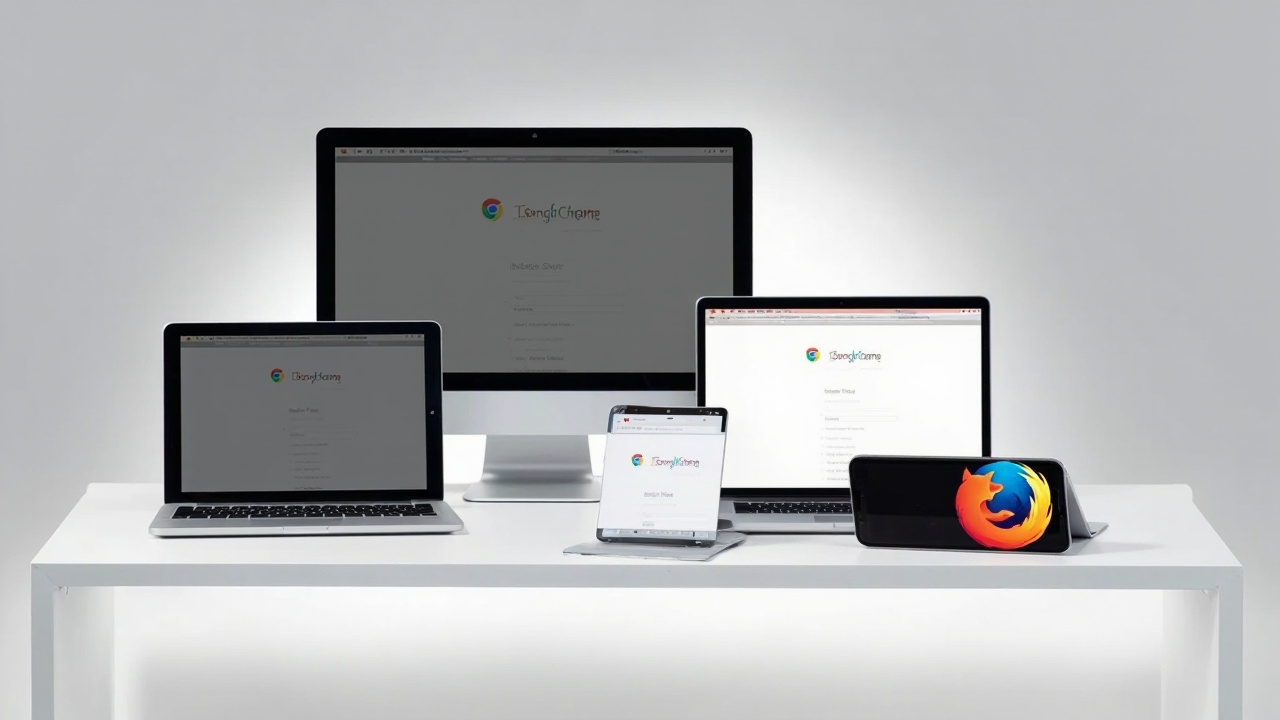In today’s digital landscape, where an online presence is crucial for businesses, ensuring your website performs seamlessly across various browsers is non-negotiable. Yet, the challenge of cross-browser compatibility can often seem insurmountable. Enter Genqe, a powerful tool that promises to simplify and streamline cross-browser testing. In this article, we will dive deep into the intricacies of cross-browser testing using Genqe, exploring its features, benefits, and how it can revolutionize your web development process.
Understanding Cross-Browser Testing: The Why and How

Before delving into the nuances of using Genqe, it’s essential to comprehend the fundamentals of cross-browser testing. This practice ensures that a website functions correctly across different browsers, operating systems, and devices. The necessity for such testing stems from the vast array of browsers available today, each interpreting web code differently.
The Importance of Cross-Browser Compatibility
Cross-browser compatibility is pivotal because users access websites through various browsers like Chrome, Firefox, Safari, and Edge, each with unique rendering engines. A site that appears flawless on one browser might be riddled with issues on another. The goal is to provide a consistent user experience, regardless of the browser used. This consistency is not only about aesthetics but also functionality. Users expect buttons to work, forms to submit correctly, and multimedia to play without hitches.
“A seamless user experience across all platforms is the hallmark of a truly accessible website.”
The importance of cross-browser compatibility extends to brand reputation and user retention. A poor experience on one browser could lead to user frustration and abandonment, ultimately impacting a site’s traffic and conversion rates.
Challenges in Achieving Browser Consistency
Achieving browser consistency is fraught with challenges. Variations in browser technology, differing support for HTML, CSS, and JavaScript standards, and the constant evolution of web technologies all contribute to potential discrepancies. Developers must be vigilant in identifying and resolving these inconsistencies to avoid alienating users. For example, a CSS property might be supported in Chrome but not in older versions of Internet Explorer, leading to layout issues.
Furthermore, the emergence of new browsers and updates to existing ones means that developers need to be proactive in updating and testing their code. Failure to do so can result in compatibility issues that could have been avoided with regular testing and updates.
The Role of Automated Testing Tools
Automated testing tools have become indispensable in the quest for cross-browser compatibility. These tools automate the process of testing web applications across multiple browsers, saving time and reducing human error. Genqe is one such tool that promises to enhance the efficiency and accuracy of cross-browser testing. By using automation, teams can focus on more complex tasks and trust that the routine checks are handled efficiently.
“Automation in testing is not just about saving time; it’s about ensuring thoroughness and precision.”
These tools can simulate user interactions, verify UI elements, and even conduct performance testing to ensure that the user experience is optimal across all platforms.
Introducing Genqe: A Game Changer in Cross-Browser Testing

Genqe is a relatively new entrant in the field of cross-browser testing, but it has quickly garnered attention for its robust capabilities and user-friendly interface. Let’s explore what makes Genqe a standout choice for developers and QA teams.
Key Features of Genqe
Genqe offers a plethora of features designed to simplify cross-browser testing. It supports a wide range of browsers and operating systems, providing comprehensive coverage. Additionally, Genqe’s intuitive interface allows for easy test setup and execution. One of its most compelling features is its ability to run parallel tests across different browsers, significantly reducing the time required for testing.
“With Genqe, developers can streamline their testing process, ensuring efficiency and accuracy.”
The platform also boasts a rich set of integrations with popular CI/CD tools like Jenkins and GitHub, allowing for seamless integration into existing workflows. This ensures that testing becomes a natural part of the development cycle rather than an afterthought.
Ease of Integration and Use
One of Genqe’s most appealing aspects is its ease of integration with existing development workflows. Whether you’re using CI/CD pipelines or standalone testing setups, Genqe can be seamlessly incorporated, minimizing disruption to your processes. This ease of integration is further enhanced by Genqe’s comprehensive API, which allows developers to customize and extend its capabilities to suit their specific needs.
The user interface is designed with simplicity in mind, making it accessible to both technical and non-technical users. This democratizes the testing process, allowing more team members to participate and contribute to testing efforts.
Advanced Reporting and Analytics
Genqe also excels in offering detailed reporting and analytics. After a test run, you receive comprehensive reports that highlight any compatibility issues, along with actionable insights to guide remediation efforts. These reports are customizable, allowing teams to focus on the metrics that matter most to them. For instance, a team might prioritize load times while another focuses on visual discrepancies.
“Data-driven insights from Genqe’s analytics can transform how teams approach web development.”
The analytics dashboard provides visual representations of test results, making it easier for teams to identify trends and recurring issues. This data can be invaluable for strategic decision-making and prioritization of development efforts.
Practical Applications: Using Genqe for Effective Testing

While understanding Genqe’s features is crucial, seeing these features in action provides a clearer picture of their potential. Here, we delve into practical applications and scenarios where Genqe can significantly enhance the testing process.
Setting Up Your First Test with Genqe
Starting with Genqe is straightforward. After signing up and selecting your browsers and devices, you can initiate your first test. Genqe’s guided setup ensures that even those new to automated testing can get started with ease. The platform provides predefined test cases and scenarios that can be customized to fit specific requirements.
“Genqe’s user-centric design makes it accessible to both seasoned testers and newcomers alike.”
The step-by-step setup process includes selecting browsers, devices, and test scripts, followed by executing the test. Users can view results in real-time, allowing for immediate feedback and adjustments.
Identifying and Resolving Common Browser Issues
During testing, Genqe helps identify common issues such as layout discrepancies, JavaScript errors, and CSS rendering problems. By providing real-time feedback, developers can quickly address these issues, ensuring a polished end product. For example, a test might reveal that a dropdown menu doesn’t function as expected in Safari, prompting developers to investigate and resolve the issue promptly.
The platform’s ability to capture screenshots and videos of test runs provides visual evidence of issues, making it easier to diagnose and fix problems. This visual documentation is particularly useful for communicating issues to stakeholders who may not be familiar with technical details.
Leveraging Genqe’s Collaboration Features
In addition to individual testing capabilities, Genqe offers collaboration features that facilitate teamwork. Multiple team members can access and work on test results, fostering a collaborative approach to problem-solving. This is particularly beneficial for distributed teams, as it allows for asynchronous collaboration and communication.
“Collaboration in testing fosters innovation and efficiency.”
Teams can comment on test results, assign tasks, and track progress within the platform, ensuring that everyone is aligned and informed. This collaborative environment helps in quickly resolving issues and accelerating the development process.
Advanced Strategies for Cross-Browser Testing with Genqe

As you become more familiar with Genqe, you can explore advanced strategies to maximize its potential. These strategies ensure thorough testing and contribute to a more robust and reliable web application.
Customizing Test Scenarios
Genqe allows for the customization of test scenarios to match your application’s specific requirements. By tailoring tests to focus on critical functionalities, you can ensure that essential features are covered. This involves creating test scripts that simulate user interactions, such as form submissions, navigation, and data entry.
Customizing scenarios also means incorporating edge cases and scenarios that are less common but potentially impactful. For instance, testing how an application behaves under high load or with slow network conditions can reveal critical performance issues.
Incorporating User Feedback into Testing
Incorporating user feedback into your testing strategy can provide valuable insights into real-world usage. Genqe’s flexibility allows you to adjust test parameters based on user reports, ensuring that your application meets user expectations. This feedback loop is crucial for continuous improvement and user satisfaction.
“Listening to user feedback and incorporating it into testing can bridge the gap between development and user experience.”
User feedback can be gathered through surveys, support tickets, and direct interactions. By analyzing this data, teams can prioritize testing efforts on areas that users find problematic or confusing, leading to a more intuitive and user-friendly application.
Continuous Testing in Agile Environments
For teams working in agile environments, continuous testing is vital. Genqe supports this by offering seamless integration with agile workflows, enabling frequent and automated testing throughout the development cycle. This approach ensures that issues are identified and addressed early, reducing the risk of costly fixes later in the development process.
Continuous testing also supports the agile principle of delivering incremental value to users. By testing and releasing small updates regularly, teams can gather feedback and iterate quickly, leading to a more responsive and adaptive development process.
Case Studies: Success Stories with Genqe

Examining real-world examples of Genqe in action provides valuable insights into its effectiveness. Here, we explore case studies of organizations that have successfully implemented Genqe for cross-browser testing.
Case Study 1: An E-commerce Giant
An e-commerce company faced challenges with inconsistent user experiences across different devices. By implementing Genqe, they streamlined their testing process, reduced bug counts by 40%, and improved customer satisfaction. The company used Genqe to test critical user journeys, such as the checkout process, ensuring that users could complete purchases without encountering obstacles.
The results were impressive: not only did customer complaints decrease, but sales also saw a noticeable uptick as users experienced fewer interruptions and frustrations during their shopping experience.
Case Study 2: A SaaS Provider
A SaaS provider used Genqe to automate testing for their web application. The result was a significant reduction in testing time and improved application stability, leading to increased user adoption. The provider was able to release updates faster and with greater confidence, knowing that potential issues had been identified and resolved before deployment.
“Real-world success stories underscore the transformative impact of effective testing.”
The increased stability and performance of their application translated into higher customer retention and satisfaction, as users experienced a more reliable and seamless service.
Lessons Learned and Best Practices
These case studies highlight the importance of selecting the right testing tools and adopting best practices. Key takeaways include the need for comprehensive testing coverage and the value of automation in reducing manual effort. Organizations that embrace a culture of continuous testing and improvement are better positioned to succeed in the competitive digital landscape.
By learning from these success stories, other organizations can apply similar strategies to enhance their testing processes and achieve similar outcomes.
Future Trends in Cross-Browser Testing

As technology evolves, so do the challenges and solutions in cross-browser testing. This section explores future trends that may shape the landscape and how Genqe is poised to adapt.
The Rise of AI in Testing
Artificial Intelligence (AI) is increasingly being integrated into testing processes, offering smarter and more efficient ways to identify and resolve issues. Genqe is exploring AI-driven features to enhance its capabilities. AI can analyze vast amounts of data quickly, identifying patterns and anomalies that might be missed by human testers.
AI-driven testing can also automate the creation of test cases, based on user interactions and behaviors, ensuring that tests are relevant and comprehensive. This approach not only saves time but also improves the accuracy and relevance of testing.
The Impact of New Browsers and Technologies
With new browsers and technologies continually emerging, staying updated is crucial. Genqe’s commitment to supporting the latest advancements ensures that your testing remains relevant. This includes supporting new web standards, such as HTML5 and CSS3, and ensuring compatibility with emerging browsers and devices.
“Embracing new technologies and tools is essential for staying ahead in the ever-evolving digital landscape.”
By staying on the cutting edge of technology, Genqe enables developers to deliver modern, innovative web applications that meet user expectations and industry standards.
Preparing for a Mobile-First World
The shift towards mobile-first design necessitates robust mobile testing. Genqe’s support for mobile browsers and devices ensures that your mobile web applications deliver consistent experiences. This includes testing for different screen sizes, operating systems, and network conditions, ensuring that mobile users have the same seamless experience as desktop users.
Mobile-first testing also involves optimizing performance and usability for touch interfaces, which differ significantly from traditional desktop interactions.
Conclusion: Elevate Your Web Development with Genqe

Cross-browser testing is a critical component of web development, ensuring that users have a seamless experience regardless of their browser choice. Genqe offers a comprehensive solution that simplifies this process, providing developers with the tools they need to succeed.
By integrating Genqe into your workflow, you can enhance testing efficiency, improve application quality, and ultimately deliver a superior user experience. As you navigate the complexities of web development, let Genqe be your trusted ally in achieving cross-browser compatibility.
Ready to take your cross-browser testing to the next level? Explore Genqe’s features and see the difference it can make in your development process. By embracing innovative testing tools and strategies, you can ensure that your web applications are robust, reliable, and ready to meet the demands of modern users.
“In the world of web development, consistency is key. Let Genqe be your guide to achieving seamless cross-browser experiences.”
Explore further: To deepen your understanding of cross-browser testing and Genqe, consider joining online forums, attending webinars, and participating in workshops that focus on the latest developments in web testing technologies. Engaging with the community can provide valuable insights and opportunities for learning and collaboration.
Explore More on This Topic
Interested in diving deeper into this subject? Connect with experts or explore additional resources to expand your understanding.
If the link above does not work, please visit: https://calendly.com/dm-csimplifyit/30min?month=2025-05